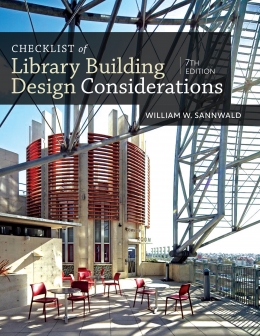2018 School Spending Survey Report
Checklist of Library Building Design Considerations
COPY ISBN
VERDICT While this edition remains a useful resource, libraries with the sixth edition may opt not to replace it and might consider acquiring Fred Schlipf, Joe Huberty, and John A. Moorman’s encyclopedic Practical Handbook of Library Architecture as a companion.
ALREADY A SUBSCRIBER? LOG IN
We are currently offering this content for free. Sign up now to activate your personal profile, where you can save articles for future viewing




Comment Policy:
Comment should not be empty !!!